Patents
I am sometimes asked why patents are useful, if not to manufacture and sell a patented product. There are also other good reasons to protect your inventions.
Protecting the integrity of your installed base is one such reason. For example, a patented latch can be used to prevent third parties from installing their own hardware into an existing control system, which would raise warranty and performance issues.
Making a claim on intellectual property means that competitors can’t stake the same claim, and preemptively exclude you from your own future market.
A portfolio of related patents forms a barrier to entry, leaving fewer opportunities for competitors to gain a foothold.
When large companies agree to cross-license their patented intellectual property, the value is in the depth and breadth of the joint patent portfolios, and the advantages offered by the combination. The value of individual patents only comes into play when one is particularly valuable.
Patent Summary
US 11606876 B2 Configurable data center platform
US 10883683 B2 LED driver system for streetlights
US 10661898 B2 Unmanned aerial vehicle for infrastructure maintenance
US 10238001 B2 Configurable data center platform
US 9553450 B2 Systems and methods of controlling power
US 20150333918 A1 POWER OVER ETHERNET ENABLED SENSOR AND SENSOR NETWORK
US 8606407 B2 Energy management application server and processes
US 7206882 B2 Triggered communication network for CANOpen networks
US 7139839 B2 Method and apparatus for assigning a network node address
US 7051143 B2 Method, system and program for the transmission of modbus messages between networks
US 6907485 B2 Hybrid change of state protocol for CANOpen networks
US 20030167321 A1 System and method for optimal setting of message acceptance filters
US 20030084384 A1 Residual error handling in a CAN network
Patent documents - US Patent and Trademark Office
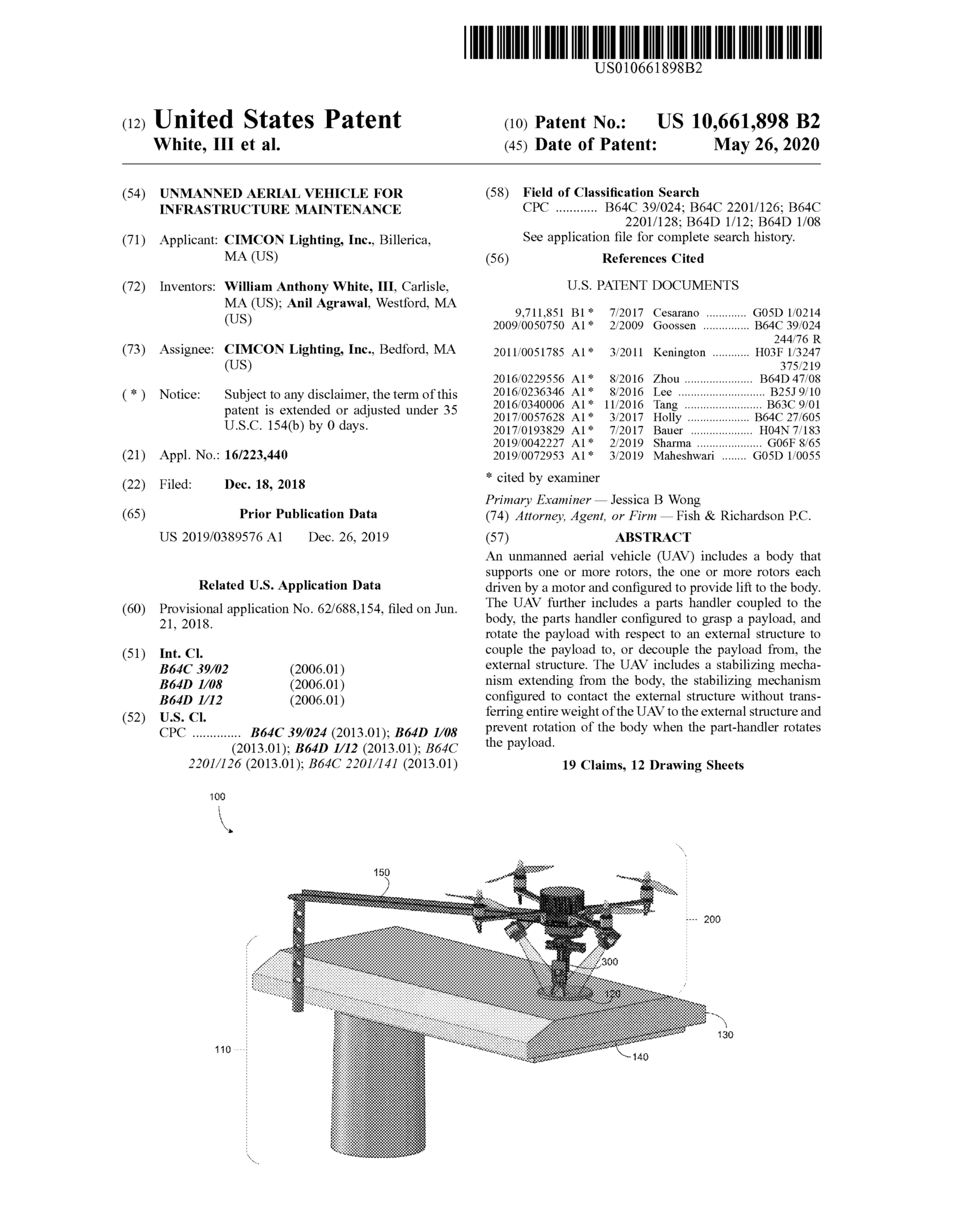
This patent describes an uncrewed aerial vehicle specifically designed for infrastructure maintenance.
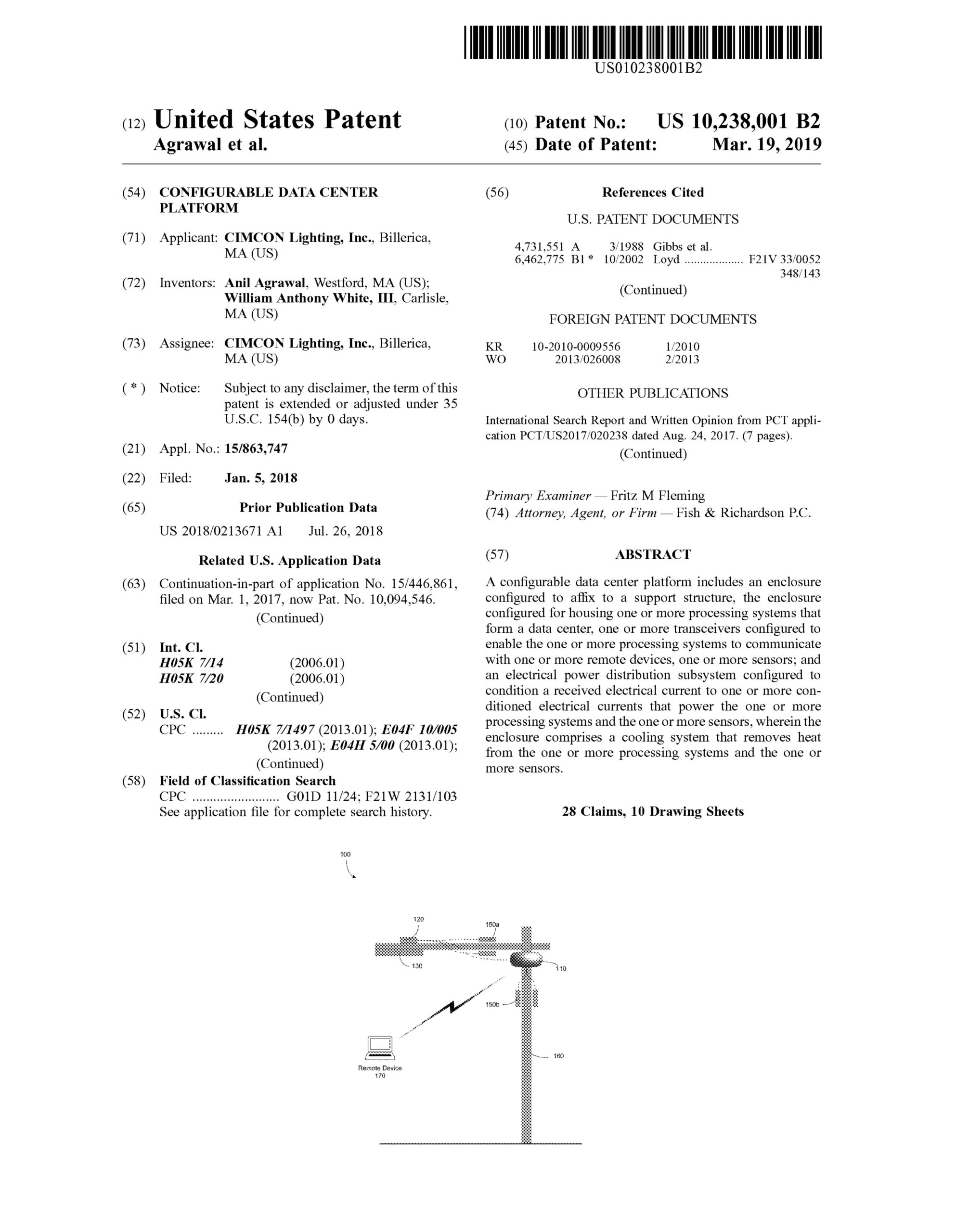
This patent describes a modular technology hub that takes advantage of the privileged position available on lighting and telephone poles.
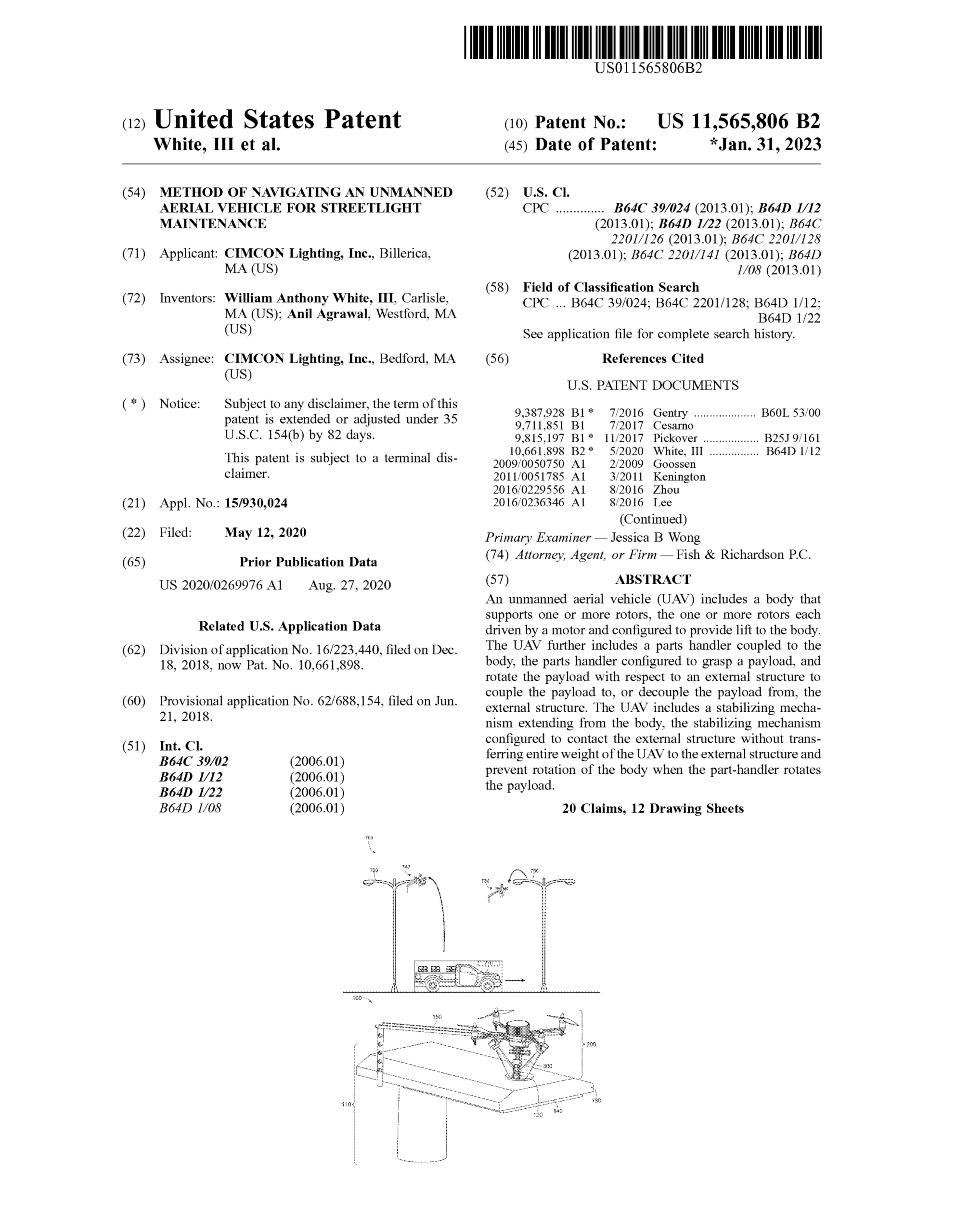
This patent addresses some of the challenges of autonomously repairing streetlights using an uncrewed aerial vehicle.
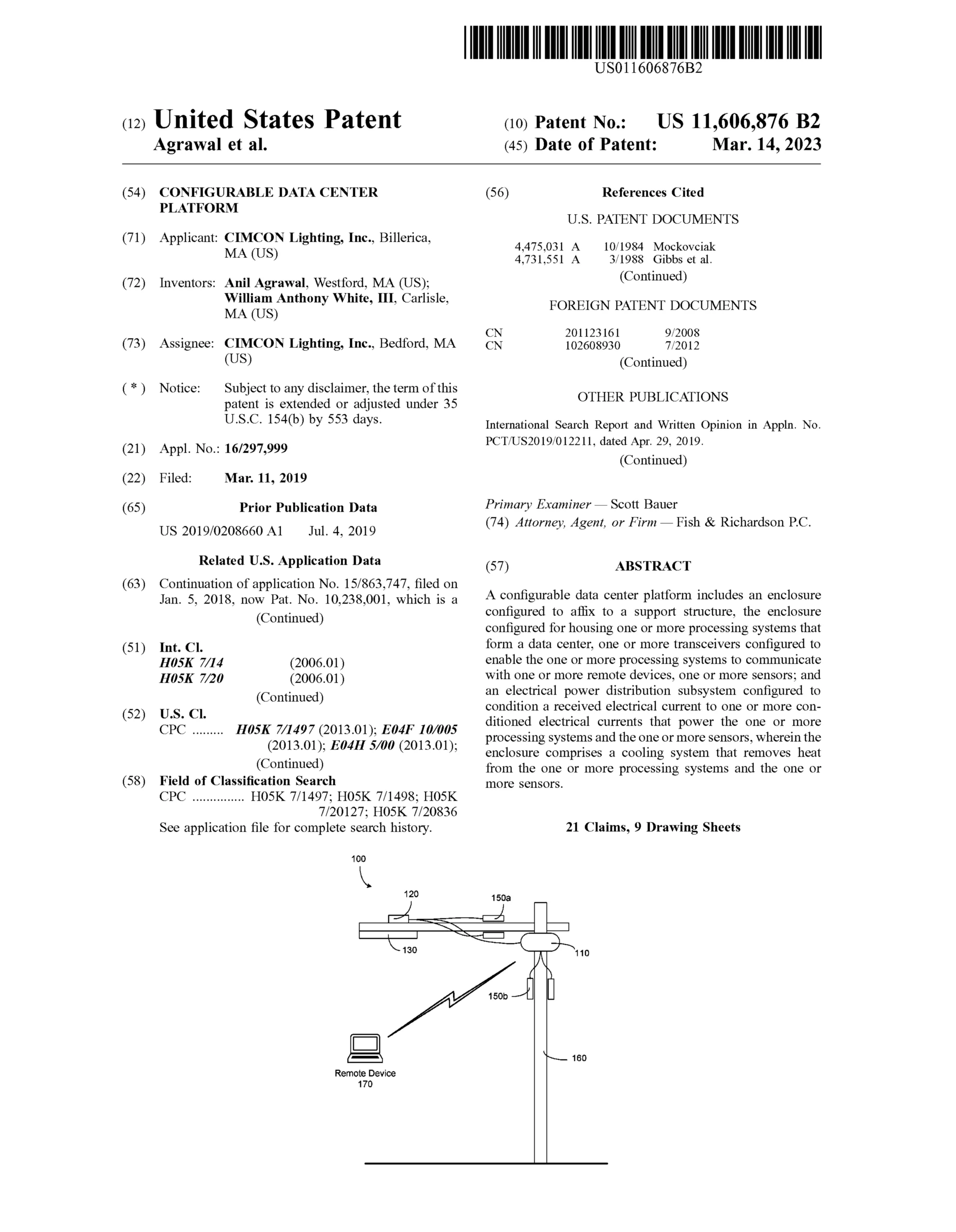
This patent describes a modular technology hub that takes advantage of the privileged position available on lighting and telephone poles.
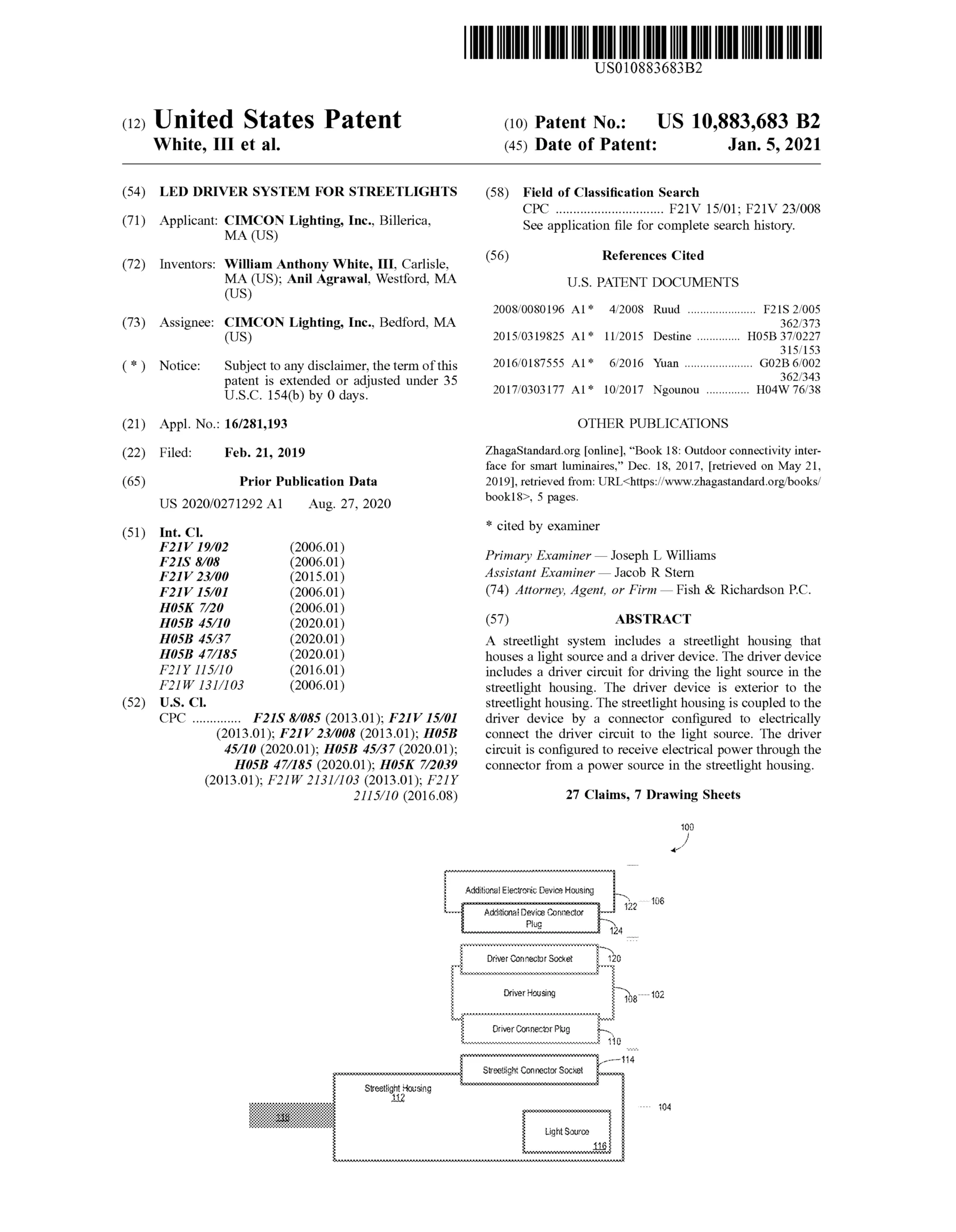
Advances in LED technology have changed the economics of public lighting. This patent describes an improved internal architecture to address the changed maintenance challenges presented by LED lighting.
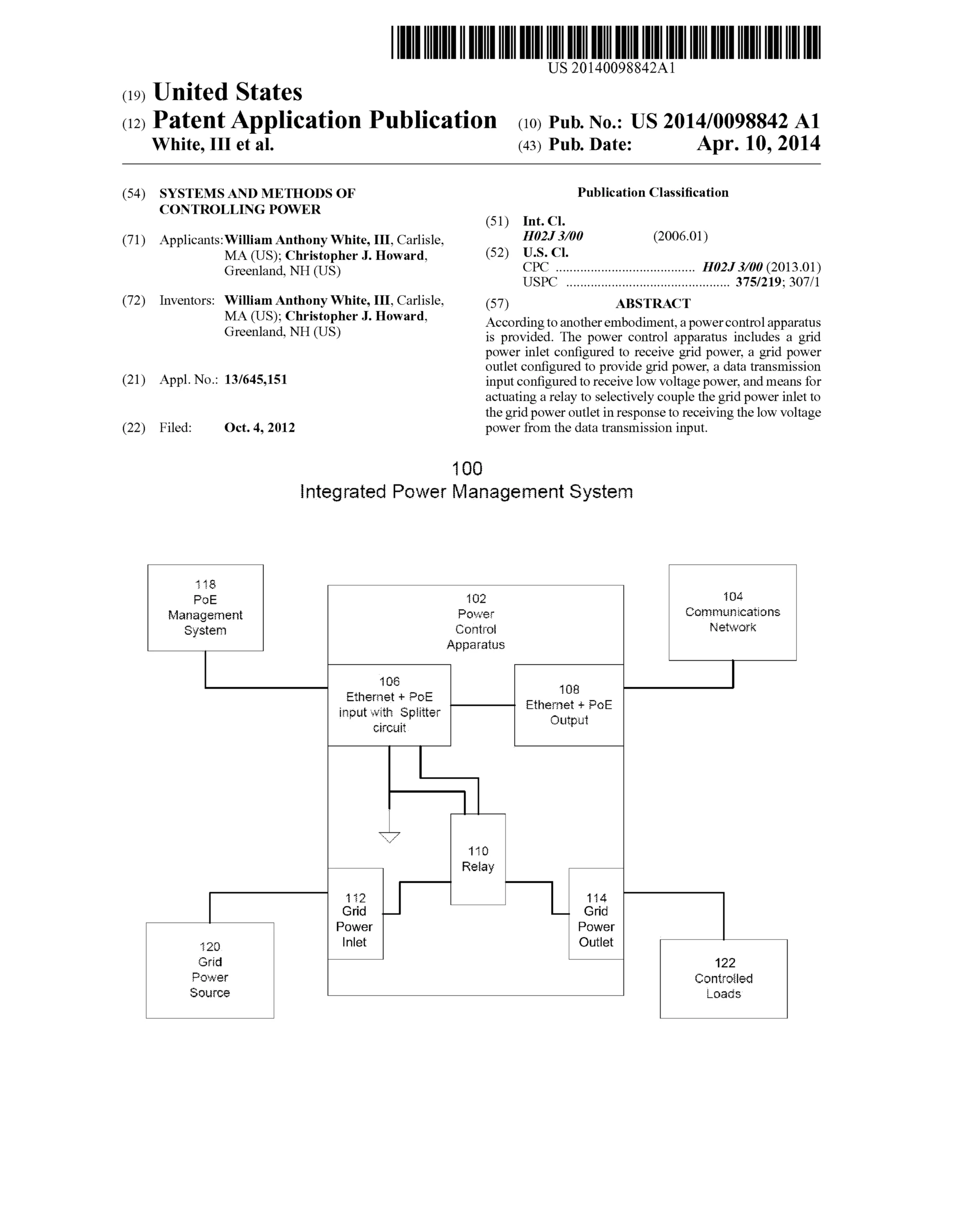
A very simple system for controlling a power outlet using Power-over-Ethernet (PoE) as the control signal.
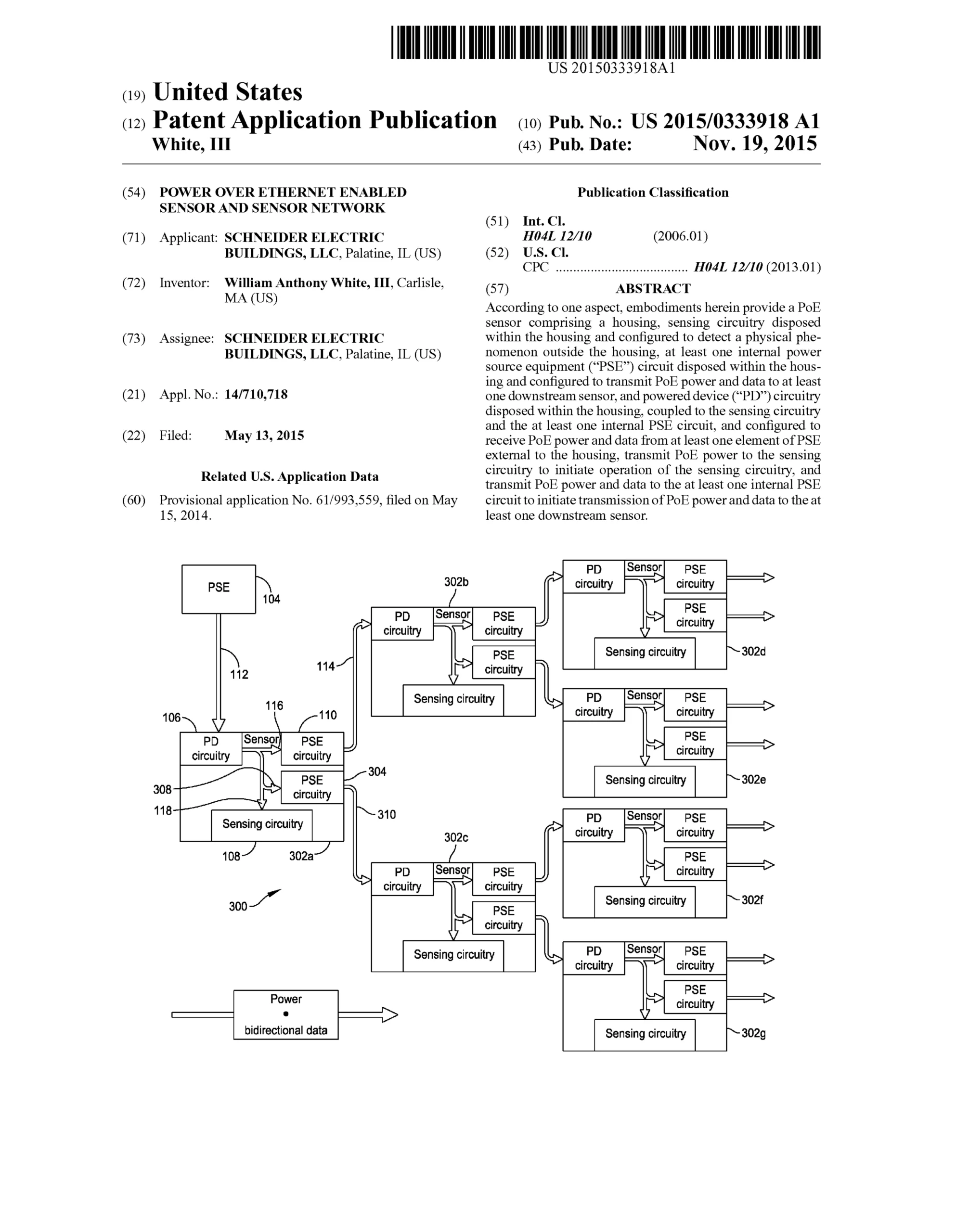
PoE power supply devices are often under-loaded, because they divide their total available power among several channels. This patent application describes a method for distributing excess power available on one channel to other devices
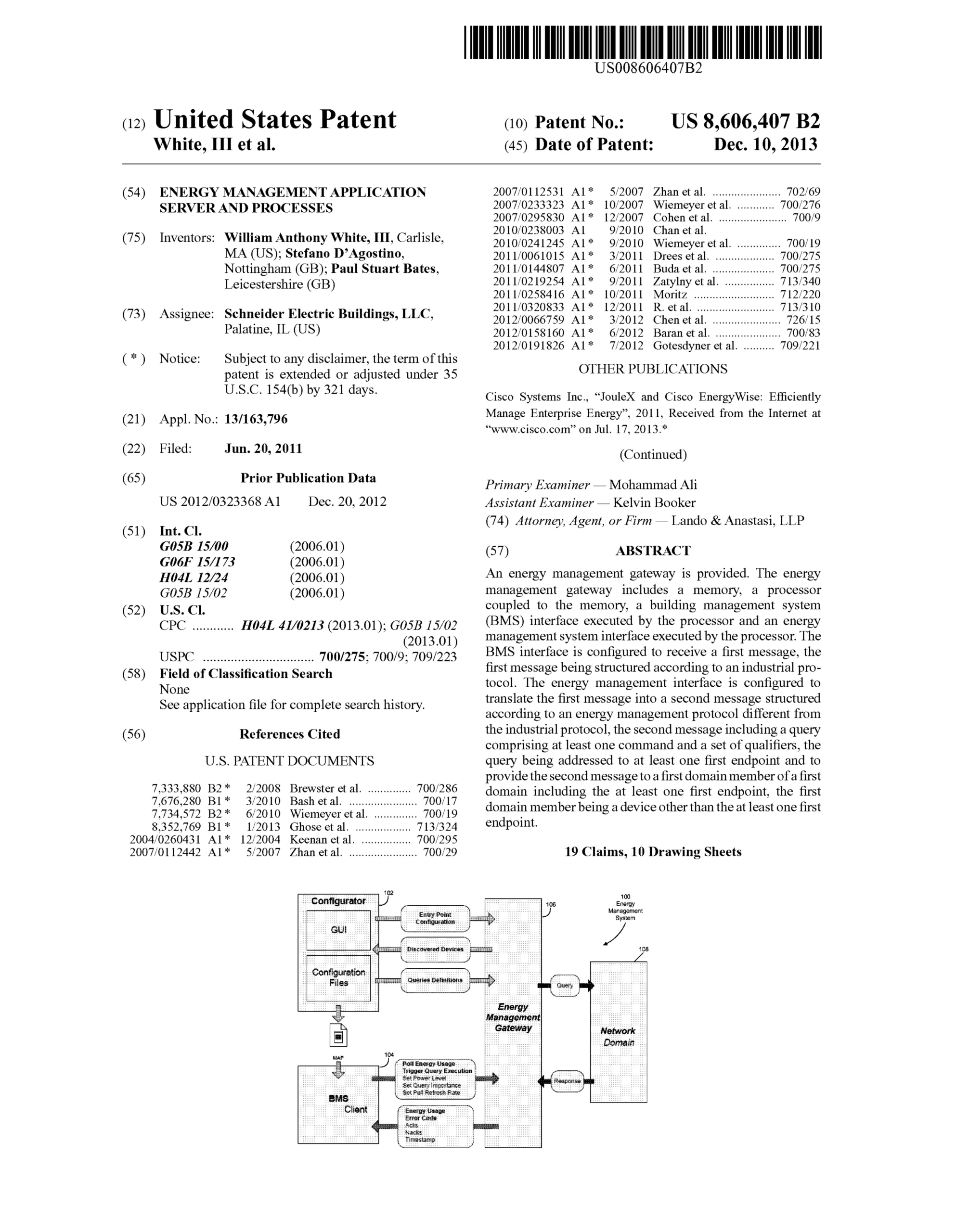
This system collects energy usage information campus-wide from IT equipment such as printers and telephones, and allows remote measurement and control of those devices.

Incorporating CAN into industrial control applications came with challenges, and several improvements to the protocol were required. This patent describes a mixed polling and triggered communication scheme.
